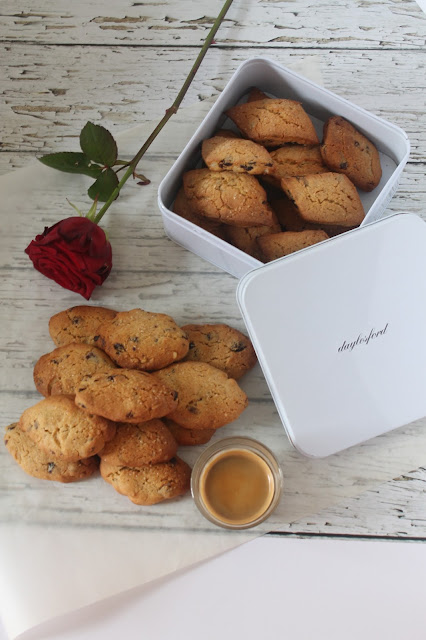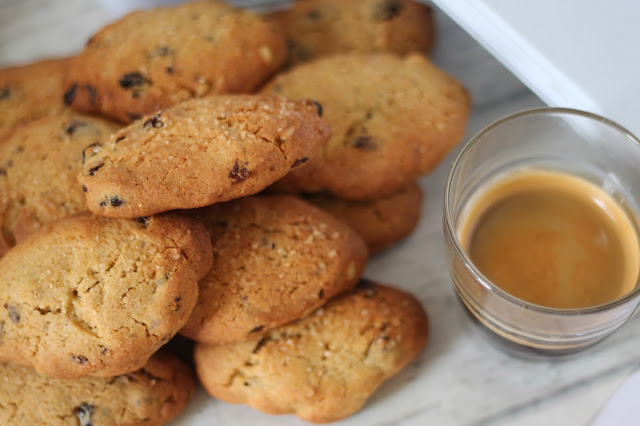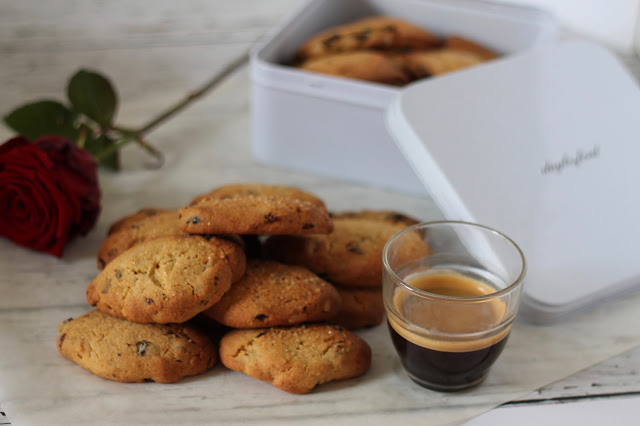Often, people who know me don’t realise that food/baking is not the only thing I am obsessed with. My other passion is languages, of which I speak four: my mother tongue, Urdu (albeit, I’m told, with a cut-glass English accent which has resulted in many an Urdu speaker laughing at me!); French (this time, I like to think, in a pretty authentic French accent, thanks to living in glorious Nice for a year); Spanish (you could hurl expletives at me all day in Spanish and I wouldn’t care, such is my love for this beautiful language); and of course, English (I acknowledge that if you’ve read previous blog posts, you might feel this last claim is pish-tosh!)
Once upon a time, I also spoke Italian. Sadly, consistent
inconsistency in my studies of it meant that I soon forgot much of that which I’d
learnt. The problem was only exacerbated when I began Spanish lessons. Now,
as Dr D will testify, every time I open my mouth to try to speak even a few
words of Italian, I instead, unfailingly, say something in español. Sigh, clearly my brain is not equipped to deal with two
such similar languages.
The irony, of course, is that the country I’ve visited the most in the
world is... yep, Italy. I’ve even broken my rule of never returning to the
same place twice (too many other locations in the world that I still need to
see) with repeat holidays to certain places there. Most recently
I found myself in contravention of this self-imposed rule during a trip to
Venice; in my defence, it was 11 years since my first holiday there, but still,
my stricter self is not impressed with my more wayward self. Tsk!
As always when on holiday, I made it my mission to seek out
authentic local foods in Venice. As an island, unsurprisingly it specialises in
delicious fish and seafood, but let’s skip to the important bit: the sweet
stuff! Aside from hot chocolate so thick it had to be eaten with a spoon, an incredible salted pistachio and gianduja flavoured gelato and a chocolate
shop so good, I dragged Dr D back there three times, the sugary treat that
stuck with me was Zaletti.
Zaletti are boat-shaped Venetian biscuits that could be found in every single pasticceria that we walked past. Needless to say, eventually I had to try one. Upon biting into it, I discovered that it was a buttery, crunchy, crumbly, currant and citrus-packed delight that melts in the mouth. So good was it that I came home and, after a little research into how to make them, made my own.
The crunchy texture of Zaletti
comes from polenta (corn meal) being added to the dough. An additional, most satisfying crunch comes from a happy sprinkling of demerara sugar on
top before baking. I understand that the biscuits can contain grappa, but to make mine
non-alcoholic, I used orange juice instead, which really helps with both
plumping up the currants and adding to the citrus scent of these delightful
goodies. Zaletti are not very sweet; Italians apparently counter this by enjoying the biscuits with a glass of sweet wine, or dipped
into some fruit coulis, but I felt they didn't need added sweetness from elsewhere and were rather satisfying simply dunked into a good old mug of
builder’s tea!
- 90g dried currants
- 90ml orange juice
- 155g unsalted butter, at room temperature
- 135g golden caster sugar, plus demerara sugar for sprinkling on top
- 1 large egg and one large egg yolk
- 210g plain flour
- 140g polenta/corn meal, regular or coarse
- 2 teaspoons baking powder
- 1/2 teaspoon salt
- Zest of one lemon
- 50g pine nuts (optional)
Place the currants in a small saucepan with the orange juice and place over a very gentle heat for about five minutes - just long enough to warm the juice. Turn off the heat and leave the currants to sit in the juice for 15-20 minutes or until you need to add them to the biscuit mixture, allowing them to steep in the orange flavour and plumpen up from the juice.
In the bowl of a stand mixer, or with a handheld electric whisk, beat together the butter and sugar until smooth and creamy. This may take a while depending on how soft your butter is - mine took a good five minutes or so.
Once creamed, add the egg, beat to incorporate and then do the same with the egg yolk.
In a separate bowl, measure out the flour, polenta/corn meal, baking powder, and salt and mix them all together using a balloon whisk (this helps to sift out lumps and to add some air).
Add the dry ingredients into the beaten butter, sugar and egg mixture and beat until incorporated.
Drain the currants, discarding the little orange juice that they haven't absorbed, then add them to the bowl along with the lemon zest and pine nuts if using. Beat again to combine and bring the dough together.
Tip the dough onto a lightly floured surface and then shape and pat it with your hands into a rectangle. If it proves to be too wet and sticky for you to be able to shape it, sprinkle some extra flour over it and under it, then shape.
Use a rolling pin to roll the rectangle to a thickness of about half an inch/1.5cm. At this point, you can wrap the rolled out dough in clingfilm and freeze it until you need it. When ready to bake it, remove from the freezer and leave out to soften for about 15-20 minutes.
To shape the biscuits, you have several options: if you aren't fussed about them being the traditional Venetian boat shape, use a cookie cutter of your preference to cut out as many biscuits as the dough will yield. If you want diamonds, use a knife to cut the dough into long strips that are about two inches wide, then cut the strips at a diagonal to get diamonds. For boat-shaped biscuits, I found the best thing was to break off about a golf ball sized lump of dough and shape it with my hands into an oval, pinching the ends to make them pointy. The biscuits won't be uniform or smooth/flat on top if you do it this way, but during my trip to Italy I didn't see a single one that was a perfect, neat shape - they were all lumpy and misshapen, and to my mind tasted all the better for it!
Place the biscuits on the prepared baking sheets and sprinkle liberally with demerara sugar (the crunchier the better, no?) Bake one sheet of biscuits at a time for 15 minutes or until beautifully golden.
Allow to cool on the baking sheets for a few minutes before transferring to a wire rack to cool completely.
If you keep the biscuit in an airtight container at room temperature, they should keep for 3 to 4 days.






No comments:
Post a Comment